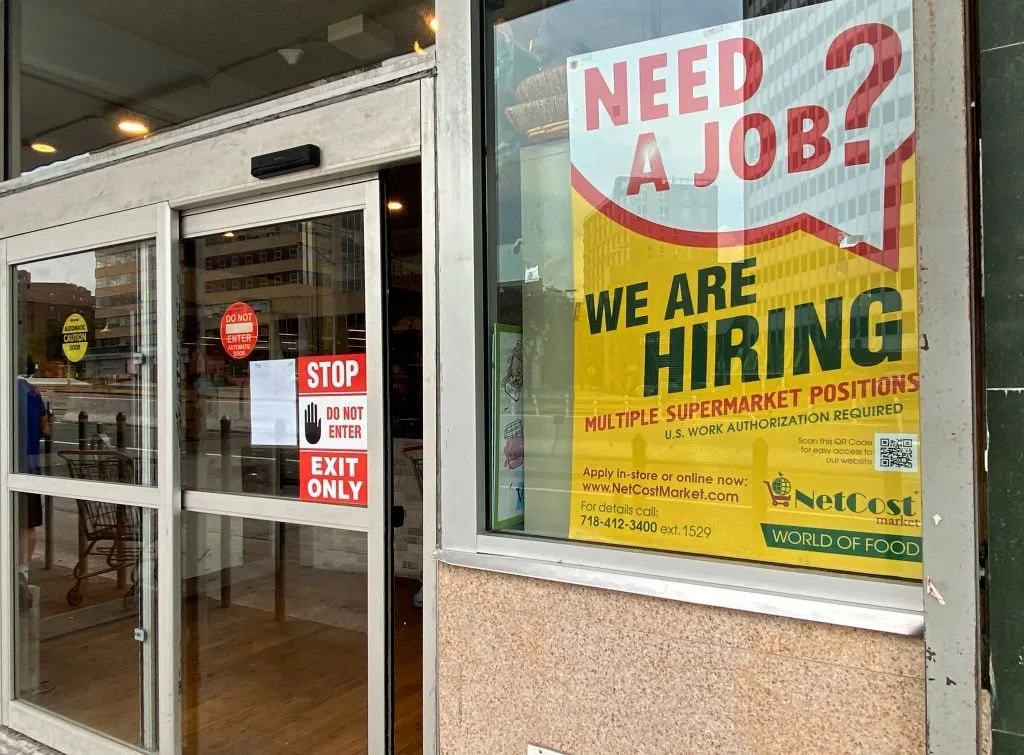For economists anticipating a soft landing, it might be time to revise their forecasts (again) and pencil in a recession. The October jobs report came out, and it was quite the spectacle when digging through the Bureau of Labor Statistics (BLS) data. It revealed that the slowdown is coming and that a downturn could be back on the table as the Federal Reserve’s tightening efforts seep into the broader economy.
A Scary October Jobs Report
Halloween is over, but everyone is still entitled to a little scare now and then – and not just by your electricity bill. What did the October jobs report tell us? The headline numbers were that the economy created a smaller-than-expected 150,000 new positions, the unemployment rate edged up to a higher-than-expected 3.9%, annual average hourly earnings eased to a higher-than-expected 4.1%, and the labor force participation rate dipped to 52.7%. These are the main findings that the financial markets reacted to, prompting Wall Street to have its best week of 2023. But for mom and pop, the figures inside the BLS non-farm payrolls report should raise some concern.
Diving Deeper
 The household survey is a more reliable indicator of the US labor market than the establishment data. The former counts individuals with jobs only once, even if they possess more than two positions. The latter counts every post someone has in the official figures. While the establishment showed 150,000 new jobs, the household component revealed 348,000 lost jobs. This was the largest decline since the coronavirus pandemic.
The household survey is a more reliable indicator of the US labor market than the establishment data. The former counts individuals with jobs only once, even if they possess more than two positions. The latter counts every post someone has in the official figures. While the establishment showed 150,000 new jobs, the household component revealed 348,000 lost jobs. This was the largest decline since the coronavirus pandemic.
Revisions have been the theme of the monthly BLS reports. October was no different as the federal agency adjusted the August and September numbers down by a total of 101,000. So far this year, eight of the last nine months have shown downward adjustments. In total, close to 400,000 jobs have vanished from the marketplace.
Where is the employment creation? Mostly in government and government-related sectors. Health care led the way in the October jobs report by adding 58,000 new positions. This was followed by government (51,000), construction (23,000), and social assistance (19,000). Overall, the government accounted for about one-third of all employment gains last month. When other industries that are dependent on the state are factored into the equation, this figure balloons to a much higher number.

(Photo by Mario Tama/Getty Images)
Manufacturing has been front and center of President Joe Biden’s economic doctrine – Bidenomics – and yet the trifecta of legislation that has cost trillions of dollars has yet to produce tangible results in the data. The manufacturing industry shed 35,000 last month. But this is a catch-22 because any gains in the manufacturing sector result from taxpayer-funded cash.
The cost of living remains high: Americans’ purchasing power has eroded by about 20% since the pandemic, and the annual inflation rate is roughly double the Fed’s 2% target. As a result, more households are struggling to stay afloat and are using every means necessary to keep their heads above water. The number of people working two or more jobs accelerated to an all-time high of 8.542 million in October.
Finally, the U-6 unemployment rate, which measures various factors, such as underemployment, part-time, and marginally attached to the labor force, rose to 7.2%, the highest since February 2022.
Stagflation or Recession?
Peter Schiff, the chief economist at Euro Pacific Capital, warned that this could indicate stagflation, a combination of high inflation and stagnating growth. “Oct.’s very weak #jobs report shows that #inflation is headed much higher. 34% of the jobs added were government workers, who don’t produce goods. Meanwhile 35K Mfg. workers who do produce goods lost their jobs. More spending and less production means higher prices. #Stagflation!” he wrote on X (formerly Twitter).
Others think the October jobs report could be a sign of a recession because of the collapse in household data. Whatever the case, it is safe to say that the Federal Reserve is finished raising interest rates because if the statistics continue to allude to slowing economic conditions, the Eccles Building has no other alternative but to begin reversing its tightening efforts. Is a recession a guarantee at this stage? Whatever happens, the White House will need to gape at the 4.9% GDP print in the third quarter for what might be the last hot reading of the US economy.




